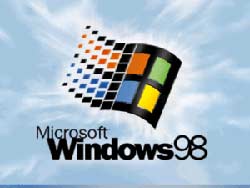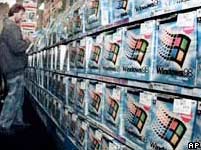 Yesterday (July 11), Microsoft officially ended support for approximately 70 million users worldwide still utilizing Windows 98. The launch of this operating system by the American corporation coincided with the rise of the Internet.
Yesterday (July 11), Microsoft officially ended support for approximately 70 million users worldwide still utilizing Windows 98. The launch of this operating system by the American corporation coincided with the rise of the Internet.
If users reinstall the program, they will see the advertisement “With Windows 98, you can access the Internet quickly and easily.” This statement illustrates that by 1998, the global network was gradually becoming familiar, and consumers were just beginning to hear about forecasts related to the dot-com boom.
At that time, around 36 million web hosts were registered, while now that number has surged to nearly 400 million. Although users can still connect to the network on systems using Windows 95, the 1998 version marked a strategic shift to develop the operating system alongside Microsoft’s Internet Explorer browser. Users could also navigate and track the location of folders on their machines with the Back and Forward buttons, similar to browsing the web.
Microsoft asserted that Windows 98 made web access easier, but finding a browser that worked harmoniously with this program was not simple. Internet Explorer 4.0 at that time was so outdated that it couldn’t be used to download newer browser versions from the software giant’s website.
 |
| Windows 98 was a major success for Microsoft. |
The interesting feature on the desktops of Windows 98 computers was a vertical bar located on the right side, containing links to about 35 “channels” of the Internet from Disney, Warner Brothers, AOL, and more, categorized by information such as news and entertainment. This feature helped Microsoft’s partners “push” specific content to consumers. At that time, there was a belief that the Internet would become like television, and people could tune into their favorite “channels.”
The idea of “pushing” content back then was somewhat similar to today’s RSS technology. However, RSS allows users to freely choose what they want to view, while “push” provided information without considering whether users liked it or not.
“Push” and RSS highlight the stark difference between perspectives in 1998 and today. Back then, large companies believed they could control the Internet and then distribute it to users. Now, a company is considered successful if it can integrate various information streams and provide users with a broader range of choices.
T.N.


















































